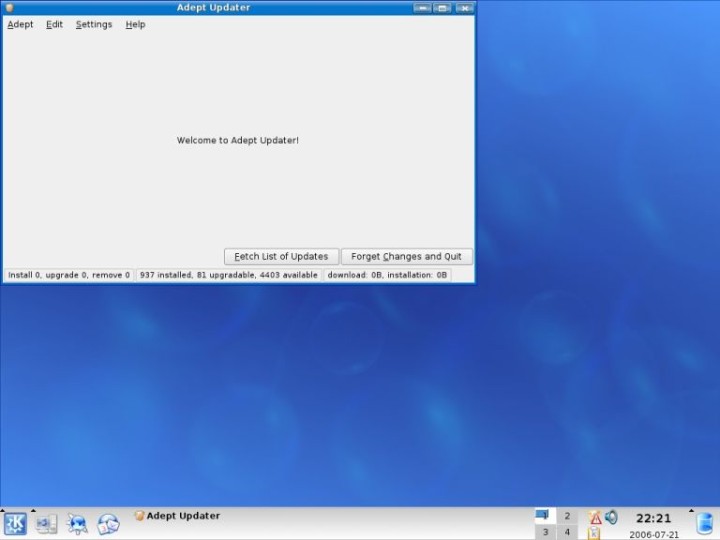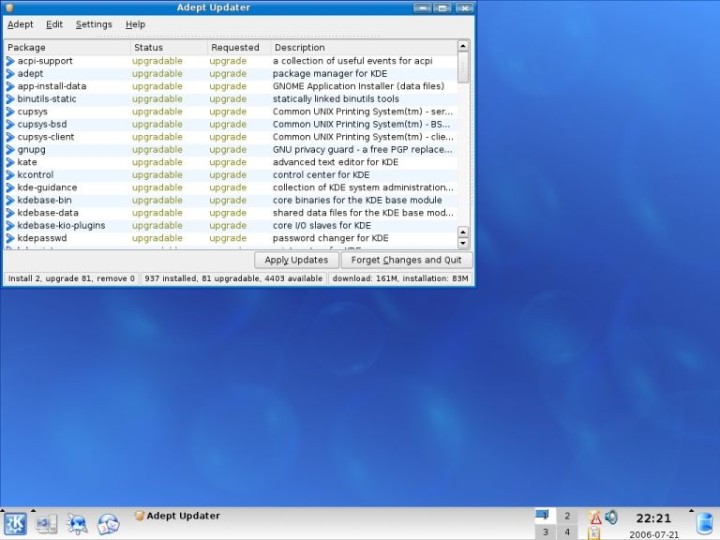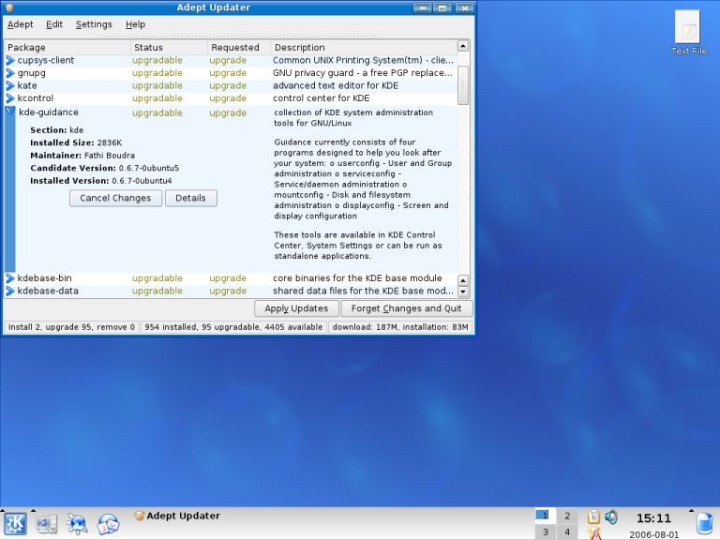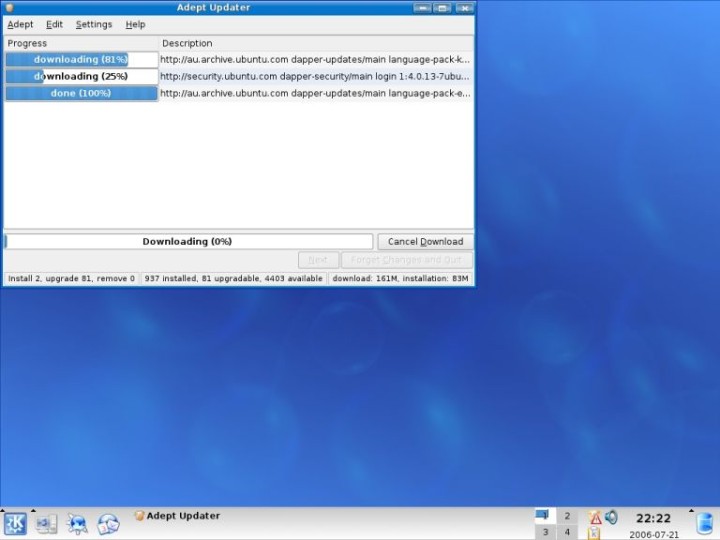It's time to tweak our Kubuntu, much like we did with SUSE Linux.
Internet Connection
Without Internet connection, you will not be able to use Kubuntu to the fullest. Unfortunately, I cannot provide accurate instructions, because of the great variety of possibilities of protocols used in different countries by different Internet service providers (ISP), as well as the specific hardware you use.
The simplest guide to configuring your network connection I have found on the Unofficial Ubuntu 6.06 (Dapper Drake) Starter Guide under Networking. However, the guide is textual and may not suit everyone.
You may also try on your own. Much like in Windows or SUSE, Kubuntu has a sort of system control panel. In Windows, it is indeed called the Control Panel. In SUSE, it's called YaST. In Kubuntu, the similar set of functions can be found under K Menu > System Settings.

Under Internet & Network > Network Settings, you will be able to configure your network card, IP address etc. This step will require some effort on your behalf, but it is not drastically different or more difficult than setting up ICS/NAT or configuring a VPN dialer in Windows, for example. Do not be discouraged.
Furthermore, as you may notice, the System Settings panel also allows you to configure a large number of options, and is very similar to what you may be used to from Windows. Internet connection sharing and file sharing can also be configured through the System Settings.
After you successfully configure your Internet connection, you will be able to update your system and download extra software. The remainder of this guide assumes that you have established an Internet connection.
Firewall
Instinctively, you may want to use a firewall. Theoretically, you do not need one. (K)ubuntu comes with no open ports, meaning no avenue of attack. Some of you may take this statement at face value and disregard the issue of firewalling altogether. However, if you feel you need one, you can install one. There is a variety of choices, including Guarddog, Firestarter, KMyFirewall, and others. KMyFirewall seems the simplest choice, although you can opt for any one you like.
To install KMyFirewall, you will need to type a number of commands in a Terminal window. You can read more about the command line later in the guide. At this stage, you should remember a few basic concepts:
- Like Windows, Kubuntu has a command line interface; In Windows, you access it by Start > Run > cmd. In Kubuntu, the command window can be accessed by K Menu > System > Konsole (Terminal Program); note, this is very similar to SUSE with KDE desktop.
- Installation of software can be done using graphical interfaces or the command line. In both cases, the installer refers to an internal source file (similar to Windows hosts file) and looks for files that you specify in the installation request. If found, the package is installed. The end result is the same.
This is what we will do, using the command line interface. We will refer to our sources for KMyFirewall and install it. To install KMyFirewall, type these commands in the Terminal window:
sudo apt-get update
sudo apt-get install kmyfirewall
System updates
Move your mouse to the update icon (in the right bottom corner of your desktop). You may notice the little red triangle and exclamation mark sign. This means there are updates available for your system. If you hover the mouse pointer over the icon for a second or two, a tooltip will popup, informing you how many updates are ready. In this case, a total of 81 packages can be downloaded and installed. Some of these are most likely important security patches. Single-click on the icon to proceed.

You will be prompted to enter your password.

After a few moments, Adept Updater will open and welcome you. Click on Fetch List of Updates to continue. Please be patient while the tool retrieves the list of updates from the Internet.

You will be presented with a list of available updates, including a brief description about each one. You may click on each update to expand it for more information.

Please note the below screenshot was taken at a different time, thus the number of available packages does not match the numbers in other screenshots. This does not impede the functionality of the explained procedure in any way.
When you expand an update, you may cancel its installation by clicking on the Cancel Changes button. If you cancel a package update by mistake, you can always reinstate it by expanding the relevant package and clicking Request Upgrade button (which will show up instead of the Cancel Changes button). You may also click on Details for more information. However, basically, you should not selectively cancel updates unless you are fully aware of what you're doing (in which case you do not need this guide). The best policy would be to proceed with the default recommended update solution.
When ready, click on Apply Updates to proceed. If you want to abort at any time, click Forget Changes and Quit to close the updater.

The updater will start installing the updates. This may take a very long time. Be patient.
